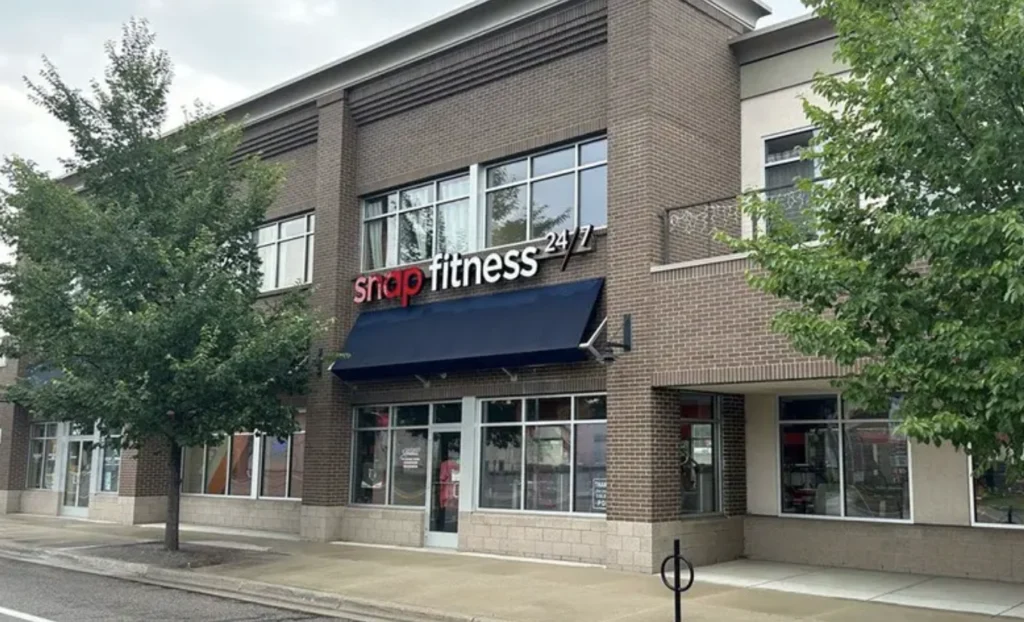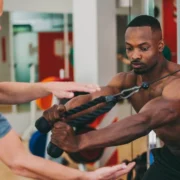Featured on Franchise Corner
View More
CEO Corner: Snap Fitness’ Ty Menzies on International Franchise Expansion

Menzies led a full-scale rebrand of Snap Fitness, positioning the 24/7 gym franchise for expansion across North America, Europa and Asia
Ty Menzies effectively took over as global CEO of Snap Fitness and parent company Lift Brands right when the pandemic hit in March 2020. Despite running an entire global gym operation from his kitchen in Australia, Menzies helped steer the brand through COVID before piloting a full-scale rebrand designed to bring Snap into the modern, post-pandemic fitness era.
Four years later, the Minnesota-based franchisor of 24/7, no-frills gyms is thriving both domestically and internationally. Snap Fitness currently counts 1,000-plus global locations, including large presences in the U.S., Australia and the U.K., with plans to become even bigger across Europe, the Middle East and Asia.
Menzies spoke with Athletech News about how he got his start in fitness franchising, Snap’s massive rebranding effort, and Snap’s plans for continued domestic and international franchise expansion.
The following conversation has been lightly edited for clarity and length.
Athletech News: Can you tell us a bit about your background in fitness franchising?
Ty Menzies: I come from a family of restaurateurs, so I always wanted to have my own business at some stage. I studied sports management at school and got into personal training. I went from personal training to a sales role and then moved to the U.K. where I became a club manager at a Gold’s Gym in London. That was really my introduction to running a franchise and business management. I loved it; the gentleman who recruited me for that role was John Treharne, who became founder of The Gym Group.
I was fortunate enough to have a bit of money in my back pocket at this time, and I was able to borrow some more to buy my first franchise with EFM Health Clubs Australia, which is a smaller boutique functional training concept, similar to Fitstop and BFT. I ended up with three EFMs across Melbourne, Australia, and I also bought two independent gyms, which I turned into 24/7 clubs. I ran those for quite some time before selling most of them in 2014.
ATN: How did you get involved with Snap Fitness and Lift Brands?
TM: I wound up having a conversation with the then-master franchise owners for Snap Fitness in Australia and New Zealand who were based out of Brisbane, and I stepped in to run the Snap Fitness business there. In April of 2018, we sold the master franchise rights for Australia and New Zealand back to Lift Brands, and I became the CEO of the Asia-Pacific (APAC) region for Lift Brands.
In early 2020, our global CEO left and I basically took over in March 2020. My first few months were very interesting because I hadn’t yet been announced as the new global CEO (Menzies was officially named Global CEO of Lift Brands in May 2020) but I was navigating our global response to COVID from my kitchen bench in Australia. We were operating in 20-plus countries and over 40 states in the U.S. I finally made it to the U.S. in June 2020 and really started diving into the global business. Four years later, it’s been a pretty significant ride, including COVID and a range of other things we’ve had to navigate.

ATN: Once the dust settled from the pandemic, what major changes did you implement at Snap Fitness?
TM: When I stepped into the global role, I knew we had to go through a process of repositioning the Snap Fitness brand. We recruited a new head of marketing who came to the business with significant brand strategy experience in hospitality. We then brought on a consulting firm to really start understanding who our members were. What we found was interesting: consumers in the U.S., Australia and the U.K. are very similar in what they want.
We also saw a very homogenous health and fitness industry – the way we talk about exercise is very performance and physically led. Everything we were seeing was before-and-after photos, “harder, faster, stronger” and “no pain, no gain.” That’s very performance-driven language which can be quite daunting for a lot of people who are new to the gym space.
ATN: With those findings in mind, how did Snap Fitness rebrand itself?
TM: We saw an opportunity to reposition Snap Fitness entirely, focusing on exercise from the perspective of how it makes you feel, not just how it makes you look. This included not just a change of logo and color scheme, but a change of our go-to-market strategy, our communication to the end consumer, and a change in our tagline from a very performance-driven, “Fast, Affordable, Convenient,” to our new tagline, “For the Feeling.”
We also changed the look and feel of our clubs to be lighter and more uplifting. When someone walks into a club, for example, our desks are now raised higher so that when any new potential member comes in, they’re seeing someone at eye height rather than sitting down at a desk. We’ve got walls up in our clubs with good-mood messaging that affirms that “For the Feeling” element, among a range of other, more subtle changes.

ATN: How else does Snap Fitness stand out from other gyms, particularly those that are also open 24/7?
TM: It’s not so much about the amenities. The reality is if you put a brand new Anytime Fitness right next to a brand new Snap Fitness, the physical attributes of the clubs are both going to be very nice, they’re both going to have great equipment and they’re going to be nicely fitted out. Most people would love to work out in either of them. We’ve all been to restaurants where you walk into one restaurant versus another and both have great food and great facilities. Where you have the best experience comes down to who has the best customer service, so that’s been a huge part of what we’ve focused on and how we’re educating our franchisees and club managers.

ATN: How is Snap Fitness positioned for international success?
TM: Snap Fitness currently operates in 18 countries. In six of those, Canada, the U.S., Australia, New Zealand, the U.K. and Ireland, we own and drive directly ourselves, meaning we don’t have any master franchisor. That’s unlike our competitors in the marketplace who have typically sold master franchise licenses in other regions. We also have direct offices in London, Minneapolis and Brisbane where we have Lift Brands employees who are directly supporting our franchisees.
We do have countries – in Europe, the Middle East and Asia – where we have master franchisors. But now that we have direct offices in both the U.K. and Brisbane, we can directly support our master franchisors and their franchisees in their dedicated time zones. That’s a lot better than trying to support them directly out of the U.S. office.
ATN: How big can Snap Fitness become, both domestically and internationally?
TM: We’re at just over 1,000 locations today, with around 570 in the U.S., around 350 in APAC, mostly in Australia and New Zealand, and around 130 across the EMEA region, mostly in the U.K. and Ireland.
We have very big growth goals across the board – between now and 2028, we expect close to 1,300 locations. Last year, we had our biggest year of franchise sales since 2012, with 77 new licenses sold, the majority of which came out of APAC and EMEA. We’re also starting to get moving across the U.S. again. We’ve got a lofty goal of selling 82 to 83 (licenses) this year.
ATN: Lift Brands, which fully owns Snap Fitness and Fitness On Demand along with minority stakes in other brands, is exploring a sale. Why is Lift looking to find a new owner?
TM: We’re predominantly private equity owned, and private equity always has a horizon in terms of buy-and-sell timing, usually it’s five to six years. Our private equity investor has been with us for around 10 years now, so it’s the right time for them to exit. I’m excited about the opportunity to bring in a new, energetic investor who can really get behind some of these strategies for growth I want to drive.



